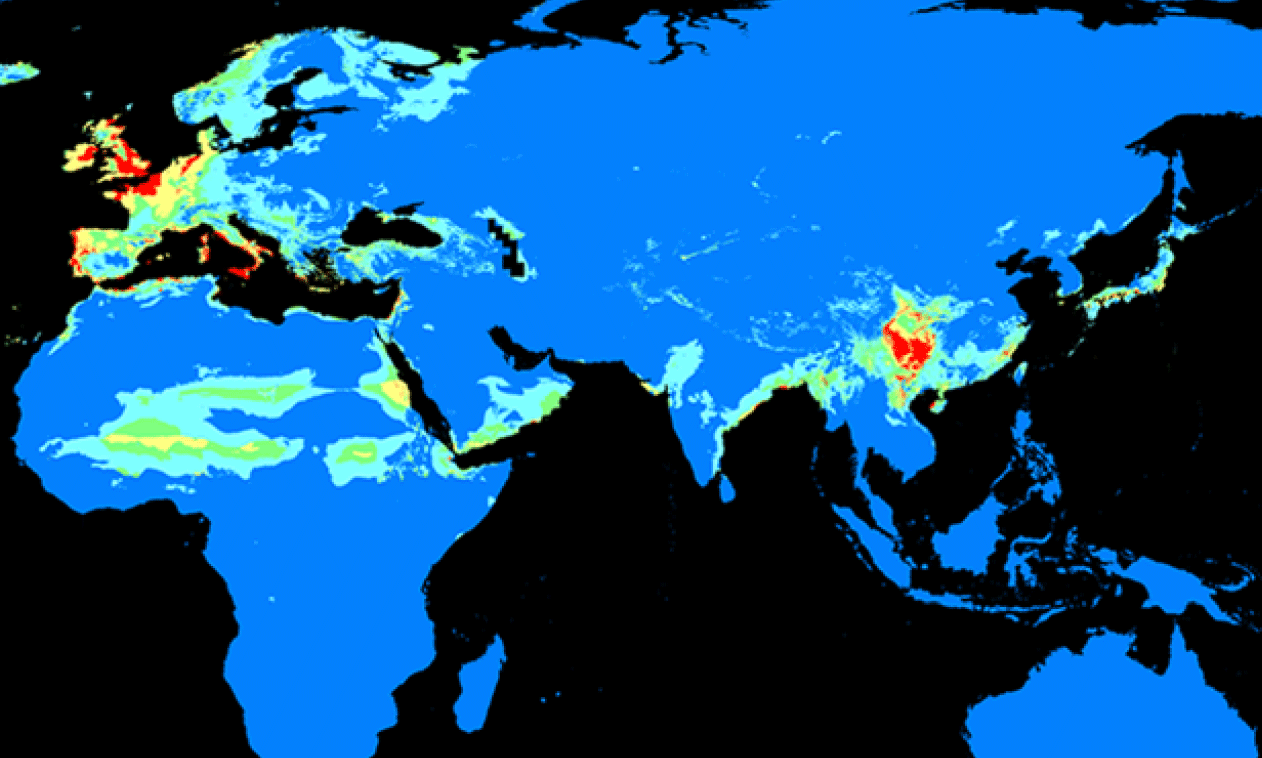博文
Genome Biology:拟南芥重测序分析揭示其对长江流域的适应
||
Adaptation of Arabidopsis thaliana to the Yangtze River basin
First author: Yu-Pan Zou; Affiliations: Institute of Botany, Chinese Academy of Sciences (中科院植物所): Beijing, China
Corresponding author: Ya-Long Guo (郭亚龙)
Background: Organisms need to adapt to keep pace with (跟上) a changing environment. Examining recent range expansion aids our understanding of how organisms evolve to overcome environmental constraints. However, how organisms adapt to climate changes is a crucial biological question that is still largely unanswered. The plant Arabidopsis thaliana is an excellent system to study this fundamental question. Its origin is in the Iberian Peninsula (伊比利亚半岛) and North Africa, but it has spread to the Far East (远东), including the most south-eastern edge of its native habitats, the Yangtze River basin (长江流域), where the climate is very different.
Results: We sequenced 118 A. thaliana strains from the region surrounding the Yangtze River basin. We found that the Yangtze River basin population is a unique population and diverged about 61,409 years ago, with gene flows occurring at two different time points, followed by a population dispersion (群体离散) into the Yangtze River basin in the last few thousands of years. Positive selection analyses revealed that biological regulation processes, such as flowering time, immune and defense response processes could be correlated with the adaptation event. In particular, we found that the flowering time gene SVP has contributed to A. thaliana adaptation to the Yangtze River basin based on genetic mapping (遗传作图).
Conclusions: A. thaliana adapted to the Yangtze River basin habitat by promoting the onset of flowering, a finding that sheds light on how a species can adapt to locales with very different climates.
生物需要不断适应以跟上环境的改变,对于某个物种最近的扩张研究有助于帮助我们理解生物如何演化以客服环境的限制。然而,生物如何适应气候变化是一个非常重要的生物学问题,其仍然还有许多不清楚的地方。拟南芥是一个非常完美的系统用以研究这个基础的生物学问题。拟南芥起源于伊比利亚半岛和北非地区,现已传播到了远东地区,包括距离拟南芥天然分布最远的东南方地区长江流域,而长江流域的气候条件与拟南芥的天然分布地区是非常不一样的。
本文共重测序了118个在长江流域生长的拟南芥株系。作者发现长江流域的拟南芥群体是一个独特的群体,其从原始群体中大约在61409年前分离出来,在两个不同的时间点发生过基因流事件,随后群体在最近的几千年时间里散布于整个长江流域。正选择分析显示生物学调控进程,如开花时间、免疫和防御响应进程可能是与适应性时间相关的。尤其是作者通过遗传作图发现了一个开花时间调控基因SVP作用于拟南芥对于长江流域的适应。
拟南芥通过促进开花的起始以适应长江流域的环境,这个发现为一个物种如何适应不同区域性气候条件提供了新的视野。
通讯:郭亚龙 (http://sourcedb.ib.cas.cn/cn/expert/201112/t20111208_3409961.html)
个人简介:1998年,西北师范大学,学士;2001年,兰州大学,硕士;2005年,中科院植物所,博士;2005-2011年,德国马普发育生物学研究所,博士后。
研究方向:进化基因组学;自交不亲和系统的进化及物种形成;自然变异及适应性进化。
doi: https://doi.org/10.1186/s13059-017-1378-9
Journal: Genome Biology
Published date: 28 December, 2017
(P.S. 欢迎关注微信公众号:微信号Plant_Frontiers)
https://blog.sciencenet.cn/blog-3158122-1092484.html
上一篇:J EXP BOT:独脚金内酯功能的空间调控(综述)
下一篇:the plant journal:高粱参考基因组update
扫一扫,分享此博文
全部作者的其他最新博文
- • Plant Physiology:CsMADS3促进柑果中的叶绿素降解和类胡萝卜素合成(华中农业大学)
- • Molecular Plant:LBD11-ROS反馈调节作用于拟南芥的维管形成层增殖和次生生长(浦项科技大学)
- • Science Advances:根结线虫通过调控植物的CLE3-CLV1模块,促进侵染进程(日本熊本大学)
- • Nature Communications:油菜素内酯参与植物营养生长期转变的分子机制解析(浙江农林大学)
- • Current Biology:光合作用产生的蔗糖驱动侧根“生物钟”(德国弗莱堡大学)
- • PNAS:花同源异型基因在叶中被抑制、花中被激活的分子机制(南卡罗来纳大学)

